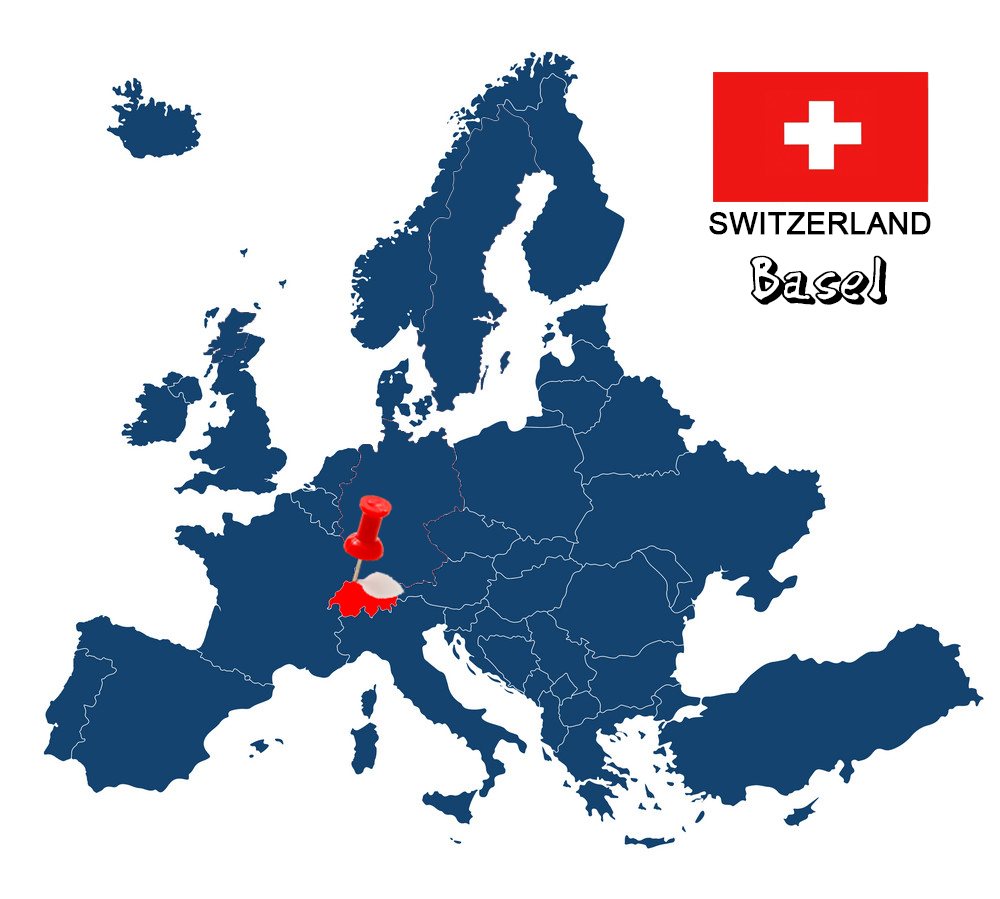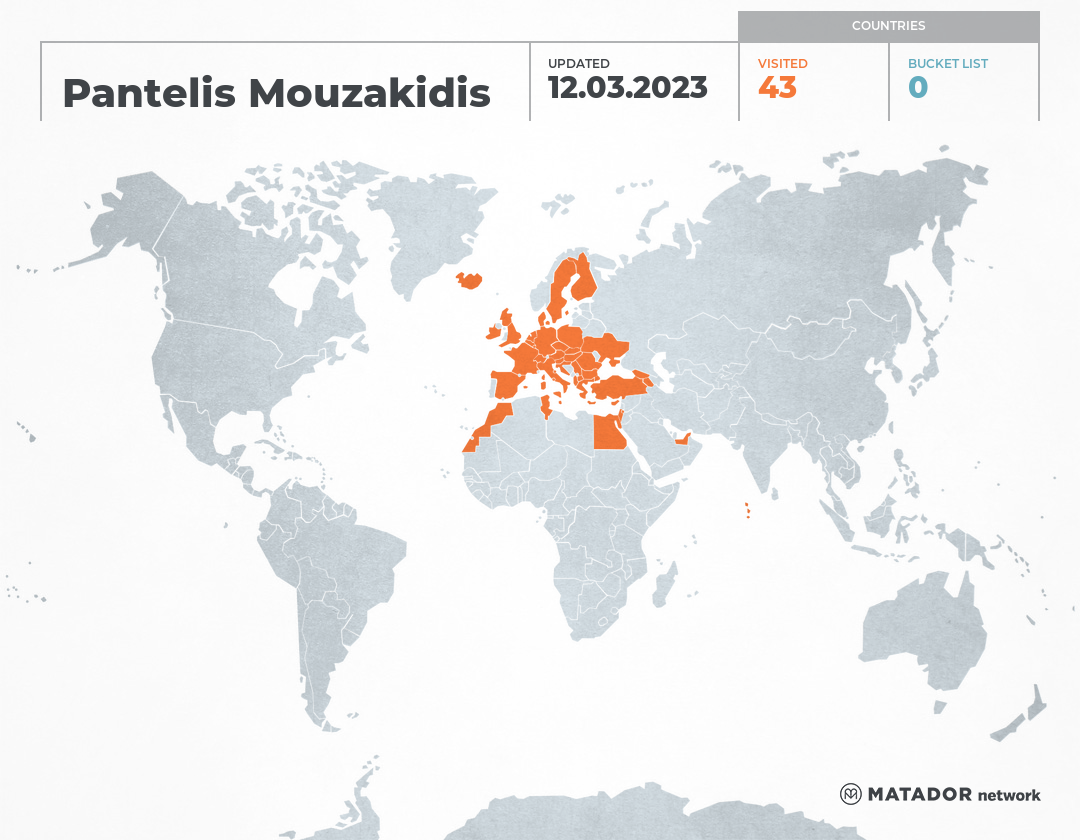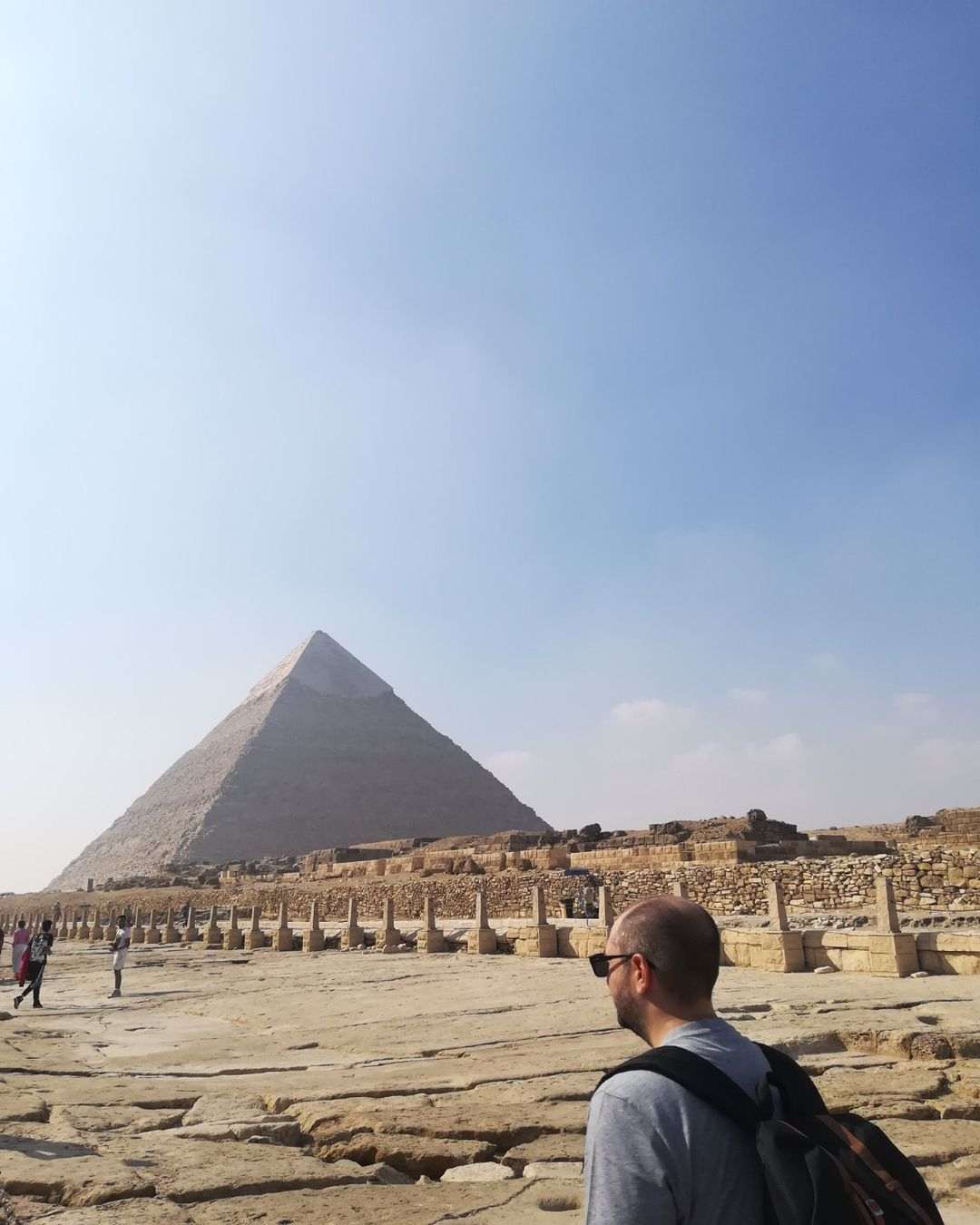
Only if you visit Switzerland, can you understand what organization means. Everything runs smoothly and perfectly organized, offering perhaps the highest quality of life in the world. It is unbelievable that as a nation it is trilingual, as a result of which its inhabitants speak several languages, depending on which country borders each canton. Italian, German, French are mixed giving special sounds to the guests of the country. One city that can boast of being international is, of course, Basel. Between Switzerland, France and Germany, it is a crossroads of culture, featuring incredible natural beauty, medieval buildings, paved streets, many art spots and a liveliness against the strict pattern of Central Europe.
A few words about the city
Basel is the third largest city in Switzerland, after Zurich and Geneva and the capital of the Basel-Stad. It is located in northern Switzerland, at a tri-national point on the country's border with Germany and France, rightfully being a crossroads of three states. In fact, the airport of the city is located on French soil! It is an important economic and industrial center, especially in the fields of chemicals and pharmaceuticals, and is considered by experts, an architectural paradise. The population of the town is estimated at 165.529 inhabitants, while more than 700.000 people live in the wider area. It runs across the river Rhine and the part of the city on the left bank (South and West) is called Grosbazel (Great Kingdom) and on the right (north and East) Kleinbazel (Little Kingdom). So I will try to present Basel to you through my own eyes and to share with you what I think someone who is visiting it for the first time should see.
Basler Munster
Undoubtedly the Cathedral of Basel (Basler Munster) is the most important thing the city has to show. It is located in the beautiful square of the same name (Munsterplatz), surrounded by medieval buildings and dozens of museums, dating between 1019 and 1500, while in the interval (1356), the church was destroyed by an earthquake and rebuilt. It was originally created as a Catholic temple, but today functions as a Protestant church. It is also built with a mixture of Roman and Gothic style, with two thin towers at its edges, beautifully colored tiles on its roof, while its special color is due to the red sandstone. Admission to the church is free, but it is definitely worth the 5 francs (about 4.5 euros) that you will waste to climb to the top of the tower of St. Martin, to admire the city from above, from the Rhine to the Black Forest. Be careful you can’t climb the tower alone, as it is forbidden for fear of suicide!

Marktplatz
The Market Square (Marktplatz) is considered the most central point of the city and certainly the most photographed, as well as the meeting place of the locals. There stands the impressive red Town Hall (Rathaus)! It is a restored Renaissance palace, which dates back to 1504 and symbolizes the accession of the city to the Swiss Confederation. The visit to the City Hall is worth it, due to the council chamber in its beautiful courtyard, the romantic galleries and the characteristic tower. Admission is free.
Of course, the name of the square is not accidental, since Marktplatz in the morning hours is a huge flea market. Always filled with people and street vendors of traditional food, such as cheeses, sausages and any kind of vegetable, ideal to be initiated into the Swiss (street food) cuisine. Around the square you will also find many beautiful medieval buildings, cafes, restaurants and all kinds of shops.
Spalentor
Spalentor is one of the three gates of Basel that still exist in the city (the other two are St. Alban Tor and St. Johanns Tor) and is definitely the most impressive. It dates back to 1370 and essentially delimits the end of the old town. In October 1356, a great earthquake destroyed the old urban area of Basel, creating a pile of ruins. Then the King ordered the restoration of all buildings and the creation of a new ring-shaped wall, which would protect and cover the entire city. The wall was reinforced with over 40 towers, one of which was Spalentor. Towards the end of the 19th century, the wall hindered the development of Basel and was considered restrictive and outdated, resulting in its demolition, in addition to the three aforementioned gates. So it is worth taking a walk to Spalentor, to see on its left a mailbox from the beginning of the 19th century with the emblem of the Basel dove and to go through it to understand how big it is.

Mittlere Brucke
The Rhine (Rhein) is one of the most important rivers in Europe, which has its sources in Switzerland and flows mostly to the north through Germany and the Netherlands, flowing into the North Sea. It is perhaps one of the most popular attractions of visitors, with cruises being the favorite pastime of residents. The Middle Bridge (Mittlere Brucke) is one of the oldest river passes between Lake Constance and the North Sea and certainly one of the trademarks of Basel. At first it was used for local movement, but now it is an important passage for international trade. From there you will probably have the top view of the city, while you will be able to pass from the old town and the left bank to the essentially new town and the right bank. Along the river, you will notice dozens of locals eating, drinking and listening to music, enjoying the magnificent views.
Tinguely Brunnen
In the Theater Square (Theaterplatz) we meet one of the most famous sights of Basel, the Tinguely Brunnen. This is a particularly modern fountain of the Swiss sculptor Jean Tinguely, located since 1977 on the spot where the stage of the former theater of the city used to stand. So the Swiss artist in this shallow fountain placed ten mechanical figures, moving with low voltage current, creating the illusion that they are playing in the water. These iron figures are in constant motion and conversation with each other, like the artists (mimes, actors and dancers), who once performed great on this stage.

Of course, as the name of the square testifies here is the theater of the city (Basler Stadttheater). The original building was created in 1834, but its form has changed four times, as it was destroyed by earthquakes and fires, with the last one opening only in 1975! The impressive thing about the Basel Theater is at the back of the building, where there are some glass pyramids that are strongly reminiscent of the Louvre.
Kannenfeldpark
This park is a personal discovery and you will not find it in other articles or in tourist guides and to be honest I cannot understand why. Kannenfeldpark covers an area of 9.1 hectares, being the largest park in Basel. It was built in 1951, on the site of a former 1868 cemetery called "Kannenfeld". The park is ideal for walking on the admittedly few hot days of the year and has many playgrounds, theme parks, gardens and a small swimming pool. But the trademark of the park is a huge statue of a green giant peeking behind the trees.

The museums
Despite the size and history of the city, Basel has several museums, some of which are of particular interest and give it a reputation for being the most artful town in Switzerland. Every year in mid-June the city organizes the Art Basel festival, which is a meeting point for gallery owners from all over the world.
The most important of them is the Museum of Art (Kunstmuseum), considered the best collection of paintings in Switzerland and representing both Old masters and Modern Art. There you will find important works by Gauguin, Van Gogh, Corot, Cezanne, Braque, Picasso, Kandinsky, Leger, Chagall, Klee, Dali, Max Ernst and others, as well as later works and special exhibitions. The entrance costs 26 francs, that is, about 25e.
The most original museum of the city is the Toy Museum (Spielzeug Welten Museum or until March 2012 Puppenhausmuseum). It is a collection of more than 6,000 toys, such as teddy bears, dolls, miniatures and dollhouses, which has been operating since 1998. In fact, the collection of 2,500 bears is considered the largest in the world! The entrance costs 7 francs, that is, about 6.5 e.
Finally, it is worth a visit to the Museum Tinguely (Museum Tinguely), which contains the largest collection of the Swiss artist's most famous work, thanks to a generous donation from his widow Niki de Saint Phalle, as well as contributions from other collectors. The collection includes Tinguely sculptures and drawings, as well as an extensive library of documents and photographs. Admission costs 18 francs, ie about 16e.
How to go
As I mentioned in the introduction, the city airport is on French soil. Thessaloniki is therefore connected by air with Basel and the EuroAirport Basel-Mulhouse-Freiburg, via Easyjet. With proper planning one can find tickets starting from € 59 round trip! From there you can reach the city by bus or train, from various nearby towns in Switzerland, France and Germany, as the distances are short.
Where to stay
Basel is a small town and not particularly touristy, but it has plenty hotels and rental rooms. The problem is the prices, since throughout Switzerland the accommodation is very expensive compared to what the accommodation offers. So since Basel is essentially on the border with France and Germany, it would be a good choice to settle in one of the two countries, where clearly prices are more economical. If you wish to stay within the city, then I would suggest Hotel Alfa, a 3 star hotel, with spacious rooms and helpful staff, a tram stop right outside and just ten minutes from the Old Town.
How to move
Despite its tiny size, the city has a worthy public transport system with trams, buses and small boats for mini-rides on the Rhine (there is no metro). The main means of transport in Basel is the first and will reliably take you everywhere within the city. It is advantageous to issue a daily card for all means of transport with 8 francs, as the one-way ticket costs 3 francs! If you are staying at a hotel in the centre of Basel, ask to be given mobility pass when you check in. It is a pass for free transportation in the city for as long as you stay and includes your transportation to and from the airport. Finally, as far as taxi are concerned, they are very expensive, like everything in the city and in my opinion should be your last choice, but if you want to use them you can find them on a street or stop them on the way.
What to eat
Swiss cuisine is actually a mixture of German, French and Italian cuisine. What makes it extremely interesting, however, is the local products, which are considered of excellent quality, with the most famous being of course cheeses and chocolates. The trademark dish of the country is Fondue; it is a historical dish with a mixture of cheeses, which are melted in a special plate, with the help of white wine. Traditionally it is considered a winter food, but it is unacceptable to go to a Swiss town and not try it.
However, the Swiss prefer other cuisines and this is evident from the many international restaurants within the city. A good solution for relatively economical (certainly more economical than the average in the city) and quality food is Markthalle. It is essentially a beautifully decorated space in the center of the city, with several shops offering flavors from all over the world. If you want to eat something fast and tasty, reminiscent even a little of Greece, you can try City Point, a kebab restaurant, in the most central point of Basel, Barfusserplatz. Also, if you love sweets, I suggest you try crepes from Creperie Am Kohlenberg. The owner of the shop is French and prides himself on having the best in town, and I think he's right. I also recommend L'unique, a rock bar-restaurant, which apart from the fact that it is very atmospheric, from the outside you can see the beautiful “Graffiti Rock Stars”. Finally, for coffee, a good choice is the Movenpick Brasserie, with a view of the Red town hall.
Useful information

In Basel we travel with a passport or a new type of Police ID, where the details are indicated in Latin characters.
In Basel the language used is German. The majority, however, speaks English (Italian and French), so ask for clarifications in English.
The currency of the country is the Swiss Franc (SFr), and the exchange rate at the moment is 1€ = 1.14 SFr.
Basel is an hour behind Greece (GMT +2).
Getting to and from Basel airport is simple, since there is a bus (number 50) that will take you to and from the city centre in 17 minutes.
In Basel there is no Greek embassy or a Greek consulate, so if you need anything you should contact the nearest one, which is either in Zurich at 67 Bellerivestrasse with its phone is (004144) 3885577 or Geneva at 1 street, Rue Pedro Meylan 1208 with number +4122 7353747.
Switzerland is a destination for every season, since it combines landscapes capable of occupying even the most capricious traveler. Depending on what one wishes to do on vacation, this country can provide the appropriate activities. In Basel the cold is bitter in winter and the rains abundant in autumn and spring, so prepare properly depending on the period you decide to visit.
Recommended excursions → Zurich, Strasbourg, Freiburg

If this article seemed interesting or contributed to your quality information, then you can like my facebook page: o_thessalonikios or follow me on instagram!
Mouzakidis Pantelis









